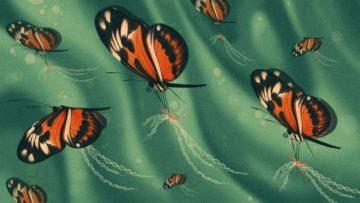Carrie Arnold in Quanta:
 Bates had noticed that some of the brightly colored Heliconius butterflies in the forest didn’t flit about like the rest; they moved more slowly. When he captured them and examined them under his makeshift microscope, he discovered that they weren’t really Heliconius at all, but astonishing look-alikes from unrelated families of butterflies.
Bates had noticed that some of the brightly colored Heliconius butterflies in the forest didn’t flit about like the rest; they moved more slowly. When he captured them and examined them under his makeshift microscope, he discovered that they weren’t really Heliconius at all, but astonishing look-alikes from unrelated families of butterflies.
By the time Bates’ discovery reached the scientific cognoscenti in England, Charles Darwin’s then-new proposal of natural selection could explain why this brilliant mimicry occurred. Birds and other predators avoid Heliconius butterflies because they are toxic to eat, with a bitter taste. The mimics were not toxic, but because they looked so much like the foul-tasting Heliconius, they were less likely to be eaten. The closer the resemblance, the more potent the protection.
What Bates and many later evolutionary biologists couldn’t explain was how this mimicry was possible. Getting the right shades of aquamarine and fiery orange in the right places on the wings required a constellation of precisely tuned genes.
More here.
